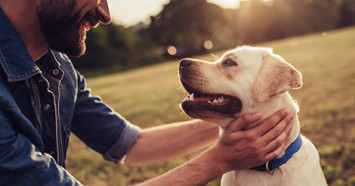
I talk to many dog owners on a daily basis and have found that some dog owners have misconceptions as to what training can and cannot do. When these owners participate in dog training with their dog, whether at home or with a professional trainer, and find that the results aren’t exactly what they wished, they are disappointed.
It’s too bad because they often feel that the training was ineffective or that something is wrong with their dog. Perhaps if expectations were more realistic, that disappointment could be averted. Let’s take a look then at what training can do – and what it cannot do.
Recognizing Your Dog’s Personality
Every dog is an individual, and several factors contribute to creating their unique personality. When introducing dogs, many people do so by identifying the breed or mixtures of breeds: “This is Rowdy, a three-year-old Golden Retriever mix. His mom was a Golden but we don’t know who is dad was.”
Breed: Your dog’s breed (or mixture of breeds) and those traits that are common in the breed certainly help make your dog who he is. Herding dogs cannot stop being herding dogs and will always be aware of moving things. Livestock guardian dogs will never stop being watchful guardians. The traits found in each particular breed (or combination of breeds) will always be a part of who your dog is.
Temperament: His temperament, which is present at birth, is his nature – it’s who he is. A tendency towards having a particular temperament is often passed down from parents and grandparents. Many canine families within a particular breed are known for certain temperaments, be it soft and gentle, loud and boisterous, or patient and steady. These are family traits within the breed and are a part of each individual’s temperament just as breed traits are.
While temperament can be affected by circumstances, it generally remains much the same. For example, a calm steady dog might become more reactive in uncertain circumstances (i.e. being evacuated during a natural disaster), but will still be calm and steady when things calm down.
Your dog’s experiences, especially while he’s young, also help form his temperament. His life with you, his experiences in the house and outside of it, all become a part of who he is.
What Training CAN Do
The first goal of most training programs isn’t necessarily teaching your dog to sit, lie down, or come. Instead, the first goal is to enhance your communication skills with your dog. When you learn to communicate with your dog (and he understands what you want), you can teach just about anything. Of course, sit, lie down, come, and the other basic obedience exercises are an important part of training – but communication must come first.
Once your dog understands the basic obedience exercises, you can use those to teach some good manners. For example, if your dog sits before passing through doorways, you can prevent collisions as he goes through the door. Or you can ask him to not go through the open doorway.
With training, you can also teach your dog the household rules that you wish him to follow. Is he to ignore the kitchen trash can and the cat’s litter box? Should he chew on his toys and not your shoes? These are all reasonable goals.
Social manners away from the house are important too. You may wish to teach him to sit when greeting people so that he doesn’t jump on them.
Training can help you change unwanted behaviors, teach behaviors that work in your household and in your life with your dog, and hopefully keep your dog safe.
What Training CANNOT Do
Ultimately, training cannot change who your dog is. If your dog is a Golden Retriever and is silly and loves to have fun, enjoy that. Let him make you laugh and enjoy playing games with him. Don’t try to train those characteristics out of him. A young, silly Golden is never going to be a watchful, protective Rottweiler, and all the training in the world will not change him.
You might make him moody, you might frustrate yourself and him, and you could realistically damage your relationship with your dog because training will not change his innate temperament. Instead, enjoy your dog for who he is. Train to build new habits, train to reduce behaviors that could be dangerous, and train to make life easier with your dog.